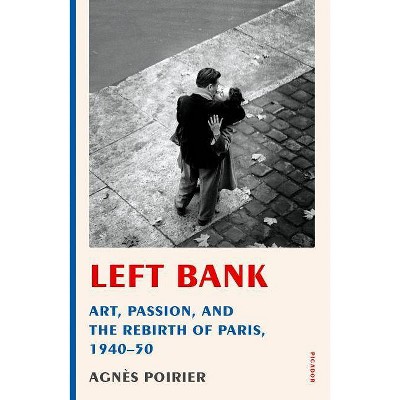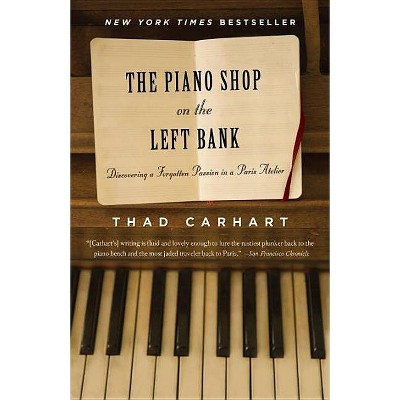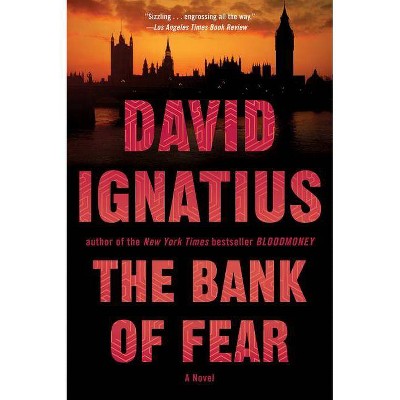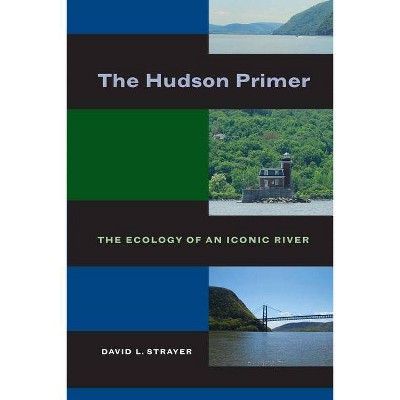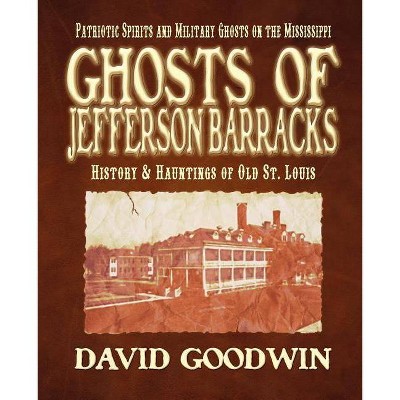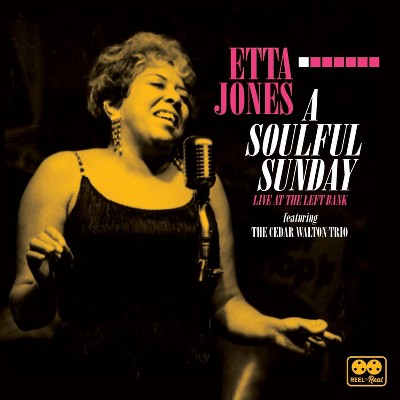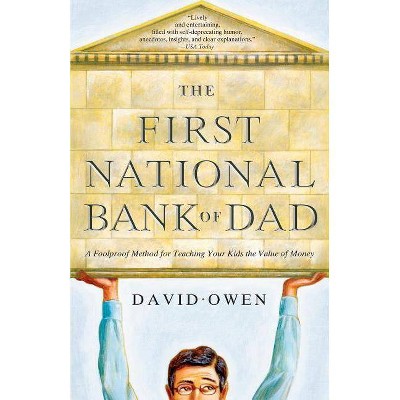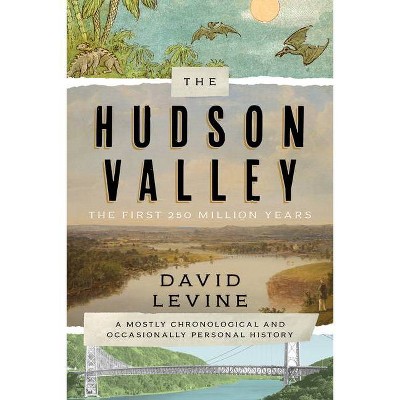Left Bank of the Hudson - by David J Goodwin (Paperback)
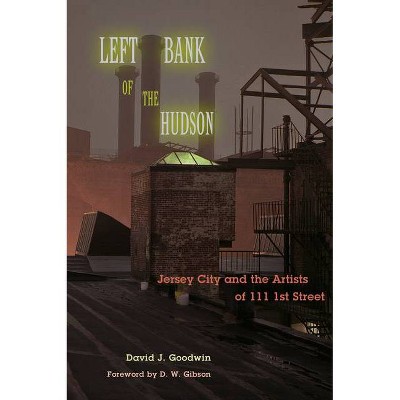
Similar Products
Products of same category from the store
AllProduct info
<p/><br></br><p><b> About the Book </b></p></br></br>"For nearly twenty years, a small, dedicated band of artists rented studio space at 111 1st Street, a former tobacco warehouse near the Hudson River waterfront in Jersey City, New Jersey. These artists eventually became engaged in a fight for their survival within the building and a city undergoing gentrification"--<p/><br></br><p><b> Book Synopsis </b></p></br></br><p>In the late 1980s, a handful of artists priced out of Manhattan and desperately needing affordable studio space discovered 111 1st Street, a former P. Lorillard Tobacco Company warehouse. Over the next two decades, an eclectic collection of painters, sculptors, musicians, photographers, filmmakers, and writers dreamt and toiled within the building's labyrinthine halls. The local arts scene flourished, igniting hope that Jersey City would emerge as the next grassroots center of the art world. However, a rising real estate market coupled with a provincial political establishment threatened the community at 111 1st Street. The artists found themselves entangled in a long, complicated, and vicious fight for their place in the building and for the physical survival of 111 1st Street itself, a site that held so much potential, so much promise for Jersey City. <p/><i>Left Bank of the Hudson </i>offers a window into the demographic, political, and socio-economic changes experienced by Jersey City during the last thirty years. Documenting the narrative of 111 1st Street as an act of cultural preservation, author David J. Goodwin's well-researched and significant contribution addresses the question of the role of artists in economically improving cities. As a Jersey City resident, Goodwin applies his knowledge of the city's rich history of political malfeasance and corruption, including how auspicious plans for a waterfront arts enclave were repeatedly bungled by a provincial-minded city administration. In writing this story, Goodwin interviewed thirteen artists and residents, two businesses, three government officials, and five non-profits, civic organizations, and community activists. The book chronologically explores the history and business of the P. Lorillard Tobacco Company, its evolution into a bustling arts community, the battle to preserve the warehouse as a historic structure, and the lessons to be drawn from the loss and ultimate demolition of the building in 2007, as well as the present state of the neighborhood. <p/>Setting the facts straight for future generations, <i>Left Bank of the Hudson </i>provides an illustrative lesson to government officials, scholars, students, activists, and everyday citizens attempting to navigate the "rediscovery" of American cities.</p><p/><br></br><p><b> Review Quotes </b></p></br></br><br><i>Left Bank of the Hudson</i> is an engaging, dynamic book that succeeds at using the story of a <i>place </i>to tell a bigger story about all of us as a <i>society.</i> It is essential reading for anyone who cares about Jersey City, the arts, gentrification, economic development, or New Jersey history.-- "Jon Whiten, New Jersey Policy Perspective"<br><br><i>Left Bank of the Hudson</i> presents a well-researched slice of life in the transformation of Jersey City's formerly dismal downtown-waterfront district to a new 'gold coast' as it details how a group of urban-pioneer artists attempted to save through adaptive use one of the area's most important manufacturing buildings. While the subject artists lost their homes after a valiant struggle, author Goodwin preserves for them and the former cigarette plant a place in New Jersey history.-- "Randall Gabrielan, Monmouth County Historian and author of Hoboken: History and Architecture at a Glance"<br><br>A former tobacco-company warehouse turned artist colony in Jersey City, N.J., serves as a microcosm of American urban development in the age of globalization. . . This close study of a specific arts community, forcibly disbanded, is useful both as an act of specific memorialization and as an exemplar of a wider phenomenon seen in cities across North America.-- "Publishers Weekly"<br><br>Goodwin tells the gripping but sad tale of 111 First Street--a Jersey City tobacco factory that found its second life as a thriving arts community. Along the way, we meet eccentric artists, Russian mobsters, corrupt cops, greedy developers, and this being Jersey City, dysfunctional politicians. There's a cameo by a cast member of the Sopranos, arson, political backstabbing, earnest activists and a final act starring internationally-acclaimed architect Rem Koolhaus. But in the end, the story is a true tragedy. Goodwin questions the place of culture and history in a living city and in the process, carves out a piece of both for the reader.-- "Helene Stapinski, author of Five-Finger Discount: A Crooked Family History"<br><br>Goodwin tells the interesting story of 111 First Street, where a bunch of ragtag artists decided to take over an old tobacco factory on the industrial outskirts of the New York region in Jersey City, New Jersey. These same artists soon found themselves caught amid a changing and gentrifying city. This in-depth exploration of the varied people, politics, and economic forces serves as a fascinating discourse on how gentrification in urban areas can happen and all the drama that unfolds as a result.-- "Jonathan LeVine, Jonathan LeVine Projects"<br><br>Goodwin's book is a history of a battle that strongly resembles the conflict of The Alamo, where artists were pitted against overwhelming forces in their attempt to defy history and create a community that could survive.-- "Hudson Reporter"<br><br>Goodwin's engaging prose and compelling, well-reasoned arguments make this book both critical--and enjoyable--reading for urban studies scholars, tenant activists, and those who anticipate the gentrification of their own neighborhoods.-- "New Jersey Studies"<br><br>Through one-on-one interviews and careful research, David Goodwin transports us to the former arts capital of Jersey City: a sprawling warehouse that pulsed with the energy of hundreds of painters, sculptors, filmmakers and writers before they were evicted, and the building was demolished. You may think you've heard the story before--artists flock to a run-down neighborhood, they breathe in new life, they get pushed out--but in recounting the little-told saga of 111 1st Street, Goodwin proves the relationship between gentrification and the creative class is far less cut-and-dried, and far more compelling.-- "Rebecca Sheir, Placemakers"<br><br>This is a broad story of urban change from 19th century industrialization to 21st century gentrification through the narrow lens of one building in Jersey City. It served as a tobacco factory and warehouse, deteriorated it was revived by artists who used its vast spaces for studios and (illegal) residences. Purchased by a real estate developer who forced the artists out, it was demolished and replaced by residential towers for the wealthy. A local social, cultural, and political history reflecting global trends, fueled by an argument for architectural preservation and the value of the arts, it should be read by those interested in the past and future of all cities.<b>---Maxine N. Lurie, <i>Professor emeritas, History Department, Seton Hall University</i></b><br><p/><br></br><p><b> About the Author </b></p></br></br><br>Educated at St. Bonaventure University, Drexel University, and Fordham University, <strong>David J. Goodwin </strong>works by day as a librarian at Fordham University School of Law. He is a past commissioner and chairman of the Jersey City Historic Preservation Commission. Currently, he serves as a board member of the Jersey City Landmarks Conservancy. He writes regularly at anothertownonthehudson.com.<br>
Price History
Price Archive shows prices from various stores, lets you see history and find the cheapest. There is no actual sale on the website. For all support, inquiry and suggestion messages communication@pricearchive.us
